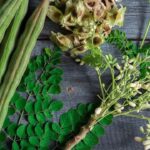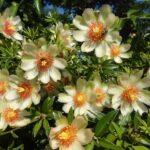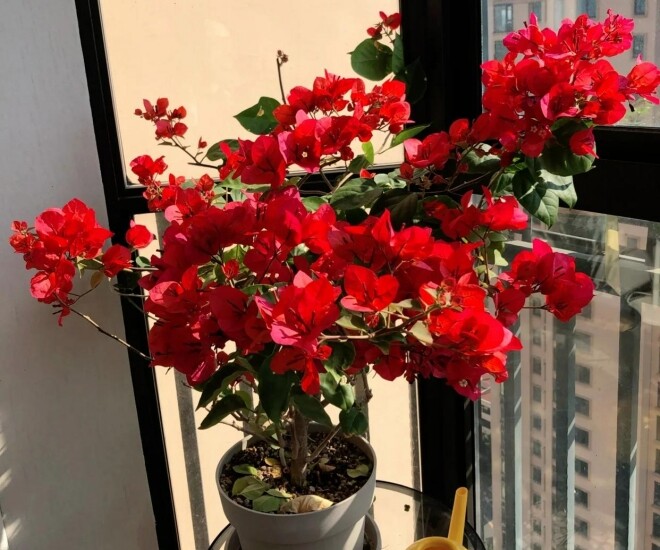
Why I Adore Bougainvillea So Much
You might wonder why I’m so infatuated with bougainvillea, given its lack of fragrance and thorny branches. However, every flower has its unique allure. I’m captivated by bougainvillea for the following five reasons:
– Adaptability: Can be grown on both north- and south-facing balconies
While it’s common knowledge that bougainvillea doesn’t fare well in cold temperatures, it’s a misconception that it’s not suitable for northern regions or balconies. In reality, as long as the temperature doesn’t dip below 5°C, bougainvillea can safely survive the winter.
This plant is also adaptable, capable of blooming all year round.
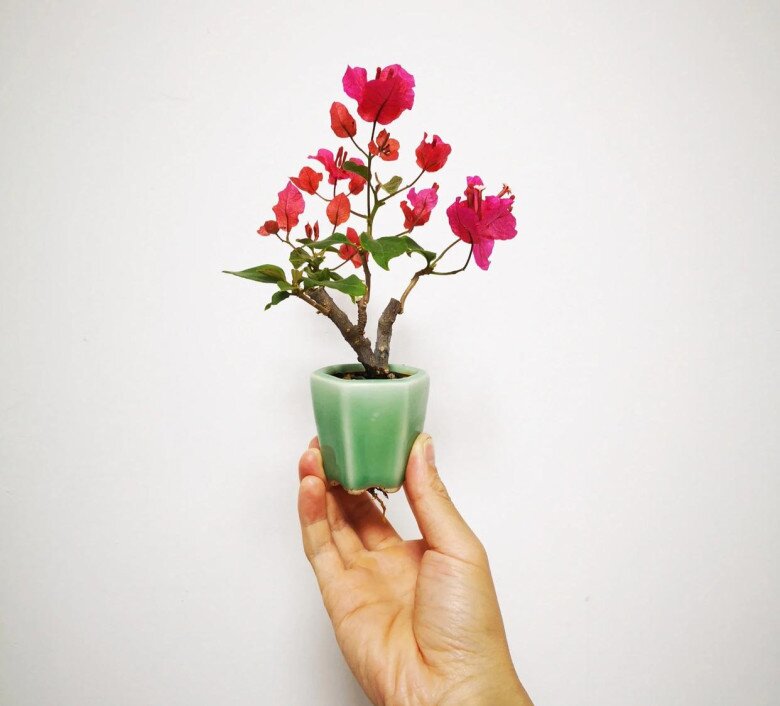
– Low ventilation requirements, no worries about pests
Bougainvillea has a natural resistance to diseases. It is rarely affected by pests, even when grown indoors, and you don’t have to worry about issues like powdery mildew, red spider mites, or small black flies, unlike with roses.
– A wide range of varieties with different colors
Bougainvillea comes in many varieties, and their colors can vary from vibrant to subtle. They can be cheerful, elegant, and graceful, or they can be dazzling and painterly, allowing for the creation of diverse garden styles.

– Easy to grow
Bougainvillea has a robust reproductive capacity and can be easily propagated through cuttings. Spring and autumn are the best seasons for propagation, as long as the temperature ranges from 20-30°C and humidity is maintained above 60%. When done correctly, the survival rate of cuttings can reach almost 100%.
Both mature and young branches can be used for propagation. However, to increase the success rate and promote faster growth and flowering, it’s recommended to use semi-mature branches. Cut 8-10 cm long sections, leaving two upper leaves if desired, and make a 45-degree cut at the bottom.
Allow the cut end to air-dry until the outer layer of the branch becomes slightly wrinkled, then soak it in a rooting hormone solution for about 20 minutes before planting.
The best growing medium is well-drained, moisture-retentive, and low-peat soil, such as river sand. After planting, water thoroughly and place the cutting in a bright, well-ventilated area, maintaining a temperature above 20°C. The cutting will develop roots within 20-30 days.
During winter or when temperatures drop, you can cover the plant with a plastic bag to retain warmth and moisture, encouraging faster root development.
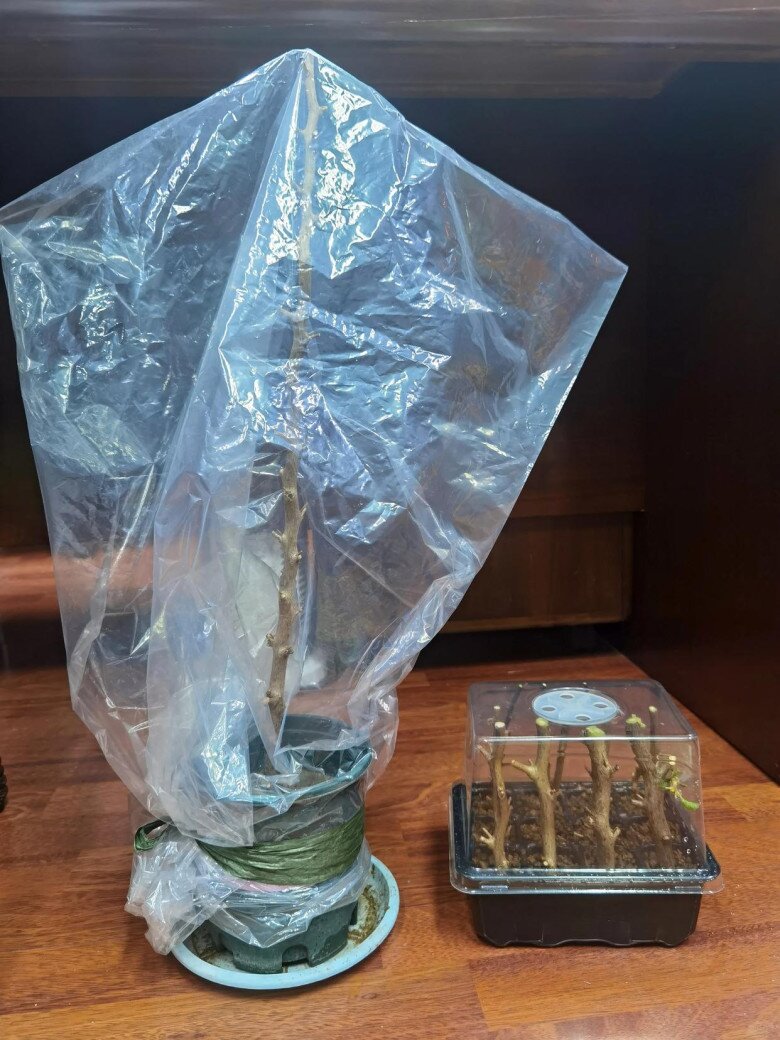
– Flexible and malleable branches, easy to shape
Bougainvillea is a climbing plant, but it doesn’t have a natural climbing ability. We can shape it to our liking through pulling, pruning, and other gardening techniques.
There are three popular shaping styles for bougainvillea: First, the “drift to one side” method involves pulling all the branches in one direction and securing them with aluminum wire or gardening tape. Prune any branches that can’t be pulled or those that detract from the overall shape.
Second, the “single-branch support” method uses a single branch or fixed stake as a support. Once the plant reaches the desired height, allow it to grow an additional 15 to 20 cm before cutting the top to encourage branching.
Third, the “sphere shape” is achieved by regularly pruning and shaping the plant to your desired form.
Shaping bougainvillea is relatively simple, and beginners can confidently experiment. Bougainvillea is low-maintenance and tolerant of pruning, and its branches are resilient, so you don’t have to worry about causing harm.

Basic Bougainvillea Care
If you want your bougainvillea to thrive, it’s essential to follow these basic care guidelines:
– Use the right type of soil
Bougainvillea thrives in acidic soil. It’s best to use nutrient-rich soil mixed with leaf mold. To meet the plant’s growth needs, it’s recommended to repot it every 1-2 years to ensure the soil remains loose, airy, and non-alkaline.
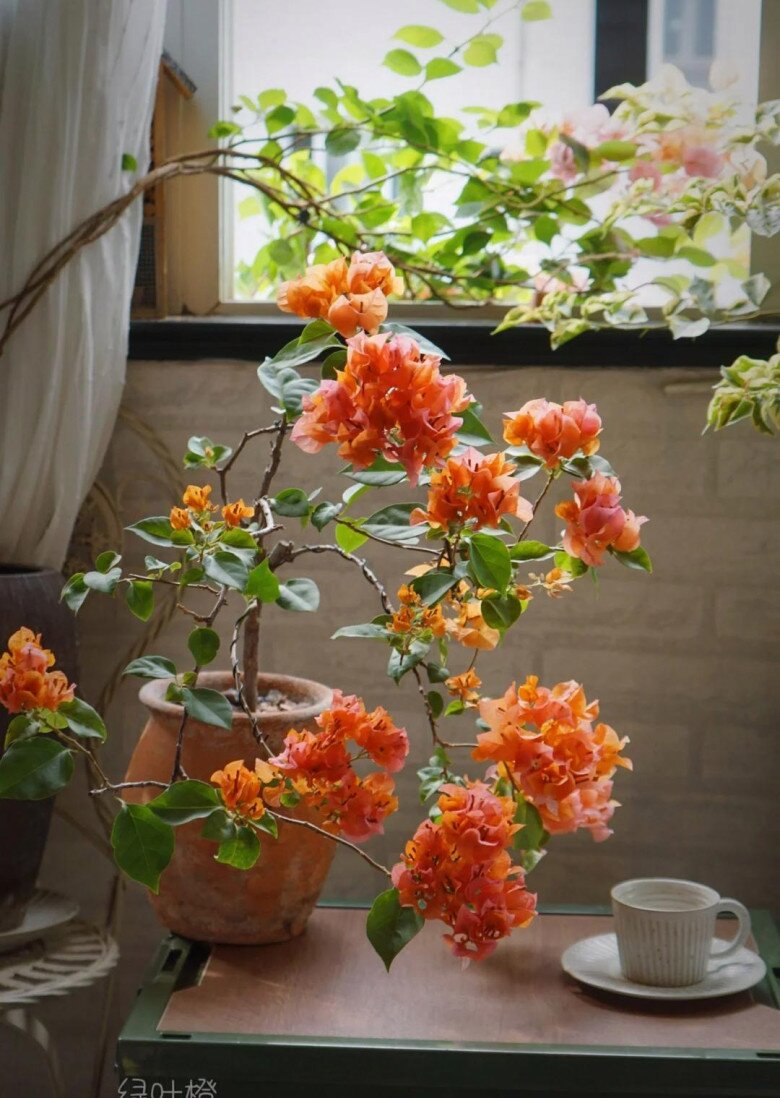
– Use basal fertilizer
Bougainvillea grows rapidly and blooms profusely. For optimal results, add some well-decomposed organic fertilizer to the bottom of the pot.
Slow-release fertilizer pellets are ideal, as they provide a steady supply of nutrients and have a long-lasting effect, promoting healthy growth and improving soil quality. When the right basal fertilizer is used, even if subsequent fertilizing is insufficient, the plant can still thrive without significant issues.
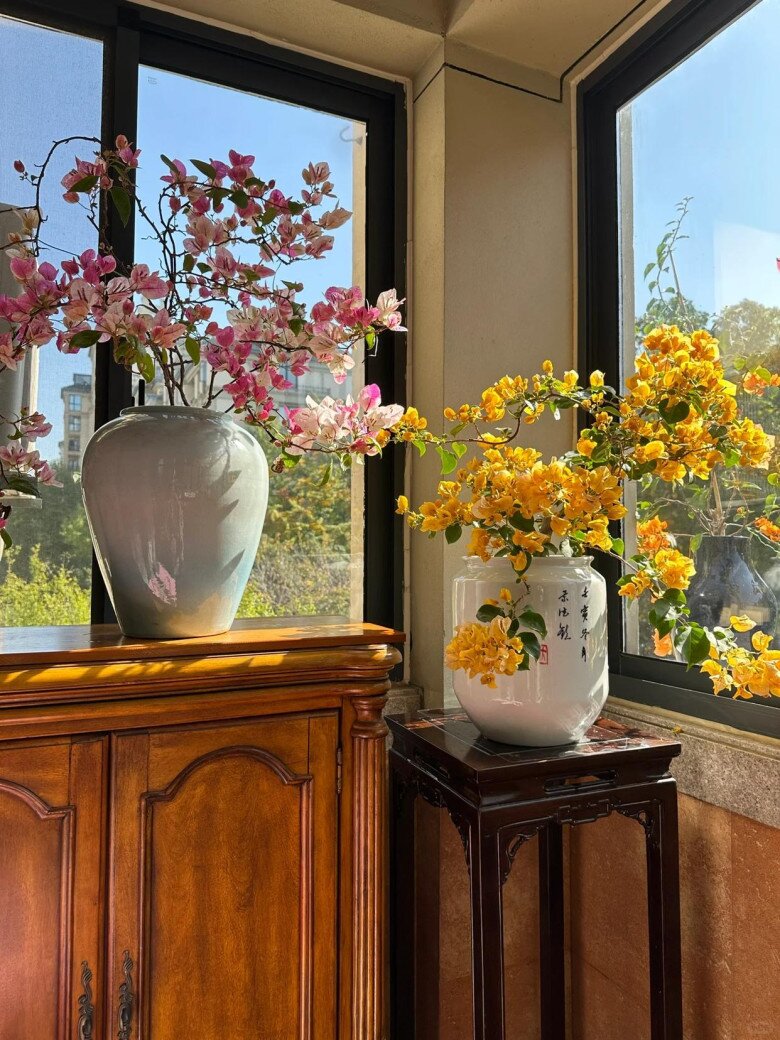
– Ensure a suitable growing environment
Bougainvillea thrives in sunlight. Adequate sunlight results in vibrant, full-of-life branches and leaves, a compact shape, and robust flowering. Therefore, whether you’re caring for it indoors or outdoors, ensure it receives ample sunlight, especially during autumn and winter when temperatures drop.
The plant should receive 6-8 hours of sunlight daily, with a minimum of 4 hours, or it may struggle to bloom. The more sunlight it receives, the more profuse the flowering.
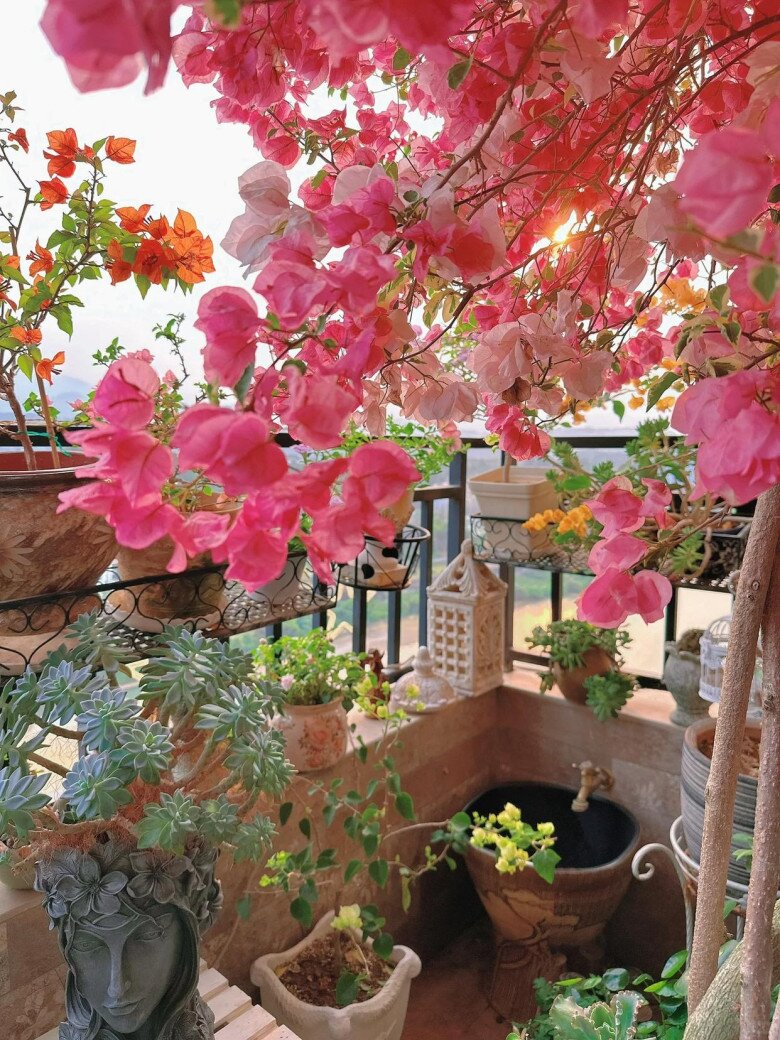
– Apply fertilizer to promote flowering
During the growth period, we can use a specialized bougainvillea fertilizer to enhance its development. Fertilize every 15 days, either with slow-release or water-soluble fertilizer.
During the flowering period, increase the phosphorus and potassium content by applying bone meal and potash. Specifically, before flowering, apply phosphorus and potassium fertilizer every 7-10 days, either by watering it directly into the soil or spraying it onto the leaves until the flowers appear. Stop fertilizing after flowering.
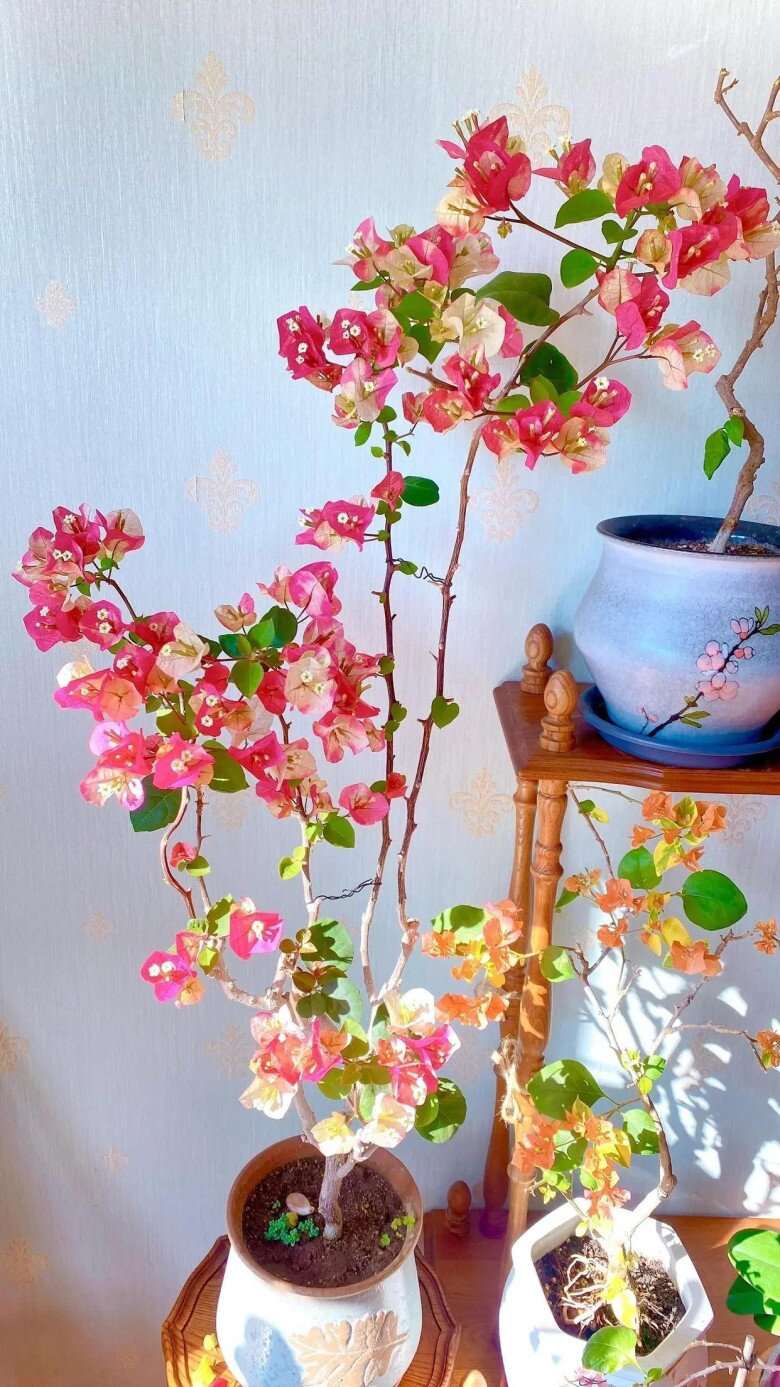
– Watering
Bougainvillea is drought-tolerant. Increase watering during the summer to prevent sun scorch, and maintain a minimum soil moisture level of 50% at other times. During the flowering period, control the moisture level and keep the soil on the drier side to encourage blooming. Allow the leaves to wilt slightly before watering again.

























